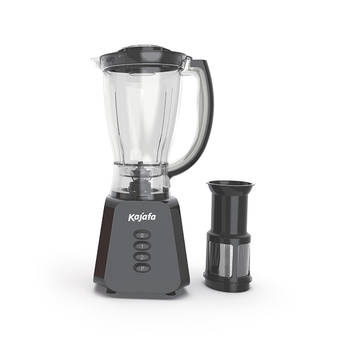A hand blender can provide flexible mixing methods based on the nature and texture requirements of different ingredients, thereby controlling the final taste of the food. Here is a detailed introduction on how to use a hand blender according to the different texture requirements of ingredients:
1. Hard ingredients (such as nuts, ice cubes, vegetable roots and stems)
Using High Speed: Hard ingredients require significant stirring force and typically require higher speed settings to ensure thorough mixing and crushing. For example, when making nut paste, smoothies, or stirring vegetables such as carrots and potatoes, choosing high speed can achieve the desired texture faster.
Accessory selection: Some hand blenders are equipped with specially designed shredders or mixing heads to help process these hard ingredients, making them easier to mix and crush.
2. Soft ingredients (such as fruits, cooked vegetables, cream)
Low to mid-range speed: For softer ingredients such as bananas, ripe tomatoes, avocados, cream, etc., a lower mixing speed can better control the texture of the ingredients and avoid excessive mixing that may cause the ingredients to lose their original taste. For example, when making puree, jam, and cream soup, you can choose to stir at low speed to maintain the delicacy of the ingredients.
Mixing time control: When using a hand blender, you can more flexibly control the mixing time, stop mixing at any time to avoid excessive refinement, and maintain the natural taste of soft ingredients.
3. Liquids (such as soup, sauce, juice)
Medium to low speed: Liquid ingredients can become too delicate and weak if stirred excessively, so it is generally recommended to use medium or low speed, especially when making soups or sauces. This ensures that the ingredients are fully blended during mixing, but does not make the liquid too thin.
Segmented mixing: If you want to mix in layers, such as making salad dressings, cream soups, etc., the flexibility of the hand blender allows you to accurately control the mixing strength of each layer, avoiding the loss of layering in the ingredients.
4. Whip ingredients (such as protein, cream, fresh cream)
High speed and blender accessories: For ingredients that need to be whipped (such as egg whites and cream), hand blenders are usually equipped with blender accessories. These accessories can generate a higher stirring frequency, helping to beat the ingredients to the desired fluffiness.
Precise control: When whisking ingredients, you can gradually accelerate at low speed to precisely control the whisking process, ensuring that the ingredients achieve the desired air sensation and volume.
5. Mixed ingredients (such as batter, cookie dough)
Medium low speed or pulse function: When mixing ingredients, especially when making batter, cookie dough, etc., excessive stirring can cause the dough to harden and affect the taste. When using a hand blender, using medium low speed or pulse function can avoid excessive mixing and help you better control the mixing degree of ingredients during the mixing process.
Prevent excessive mixing: By controlling the mixing time and speed, the softness of the dough can be ensured, preventing excessive release of gluten from the flour and maintaining the soft texture of the dough.
6. Emulsified ingredients (such as egg yolk sauce, salad dressing)
Low speed and progressive stirring: When making emulsified ingredients such as mayonnaise or salad dressing, it is necessary to control the stirring speed and time. Using low-speed stirring can better regulate the fusion of oil and water, avoiding separation. When making mayonnaise, adding oil slowly and gradually can make the sauce smoother and more uniform.
7. Particle sensation control (such as making salads, stir frying)
Segmented mixing: If you need to preserve some granular texture, such as when making salad dressing or stir frying, the advantage of a hand blender is that you can precisely control the mixing time and intensity to avoid excessive mixing. You can achieve a mixing effect by stirring for a short period of time, preserving the graininess or texture of the ingredients.


 英语
英语 中文简体
中文简体














